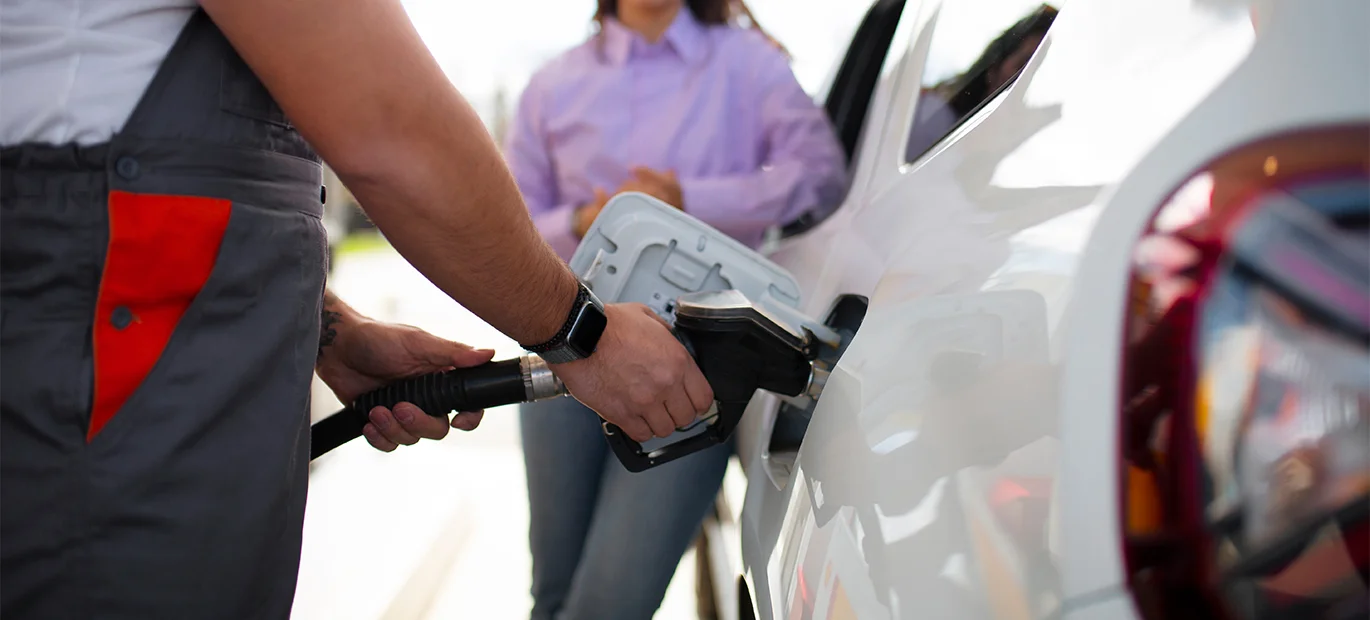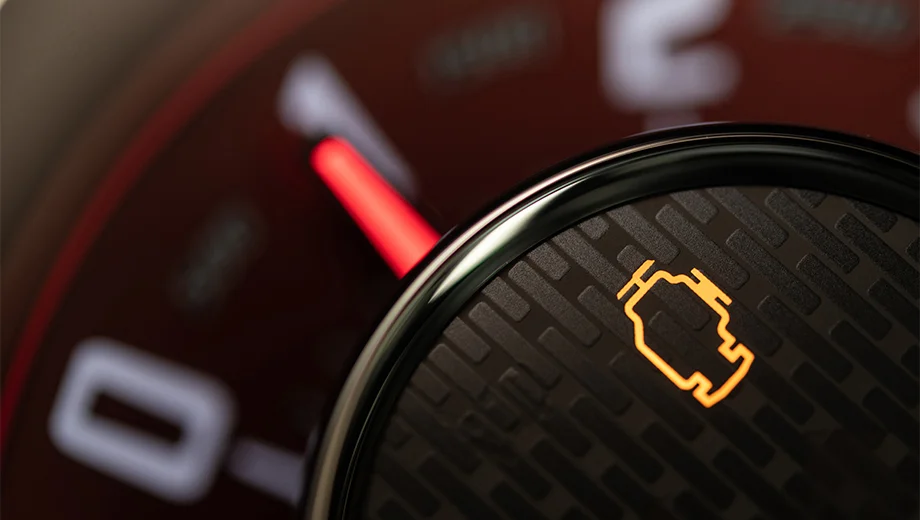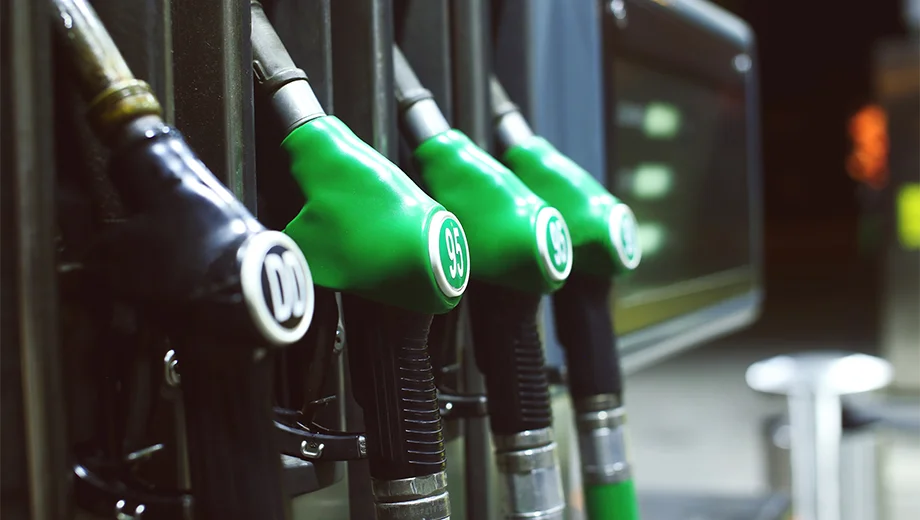What happens when you put the wrong fuel in your car
Misfuelling your vehicle can quickly turn a routine refuelling stop into a stressful situation. Whether it’s diesel in a petrol car or vice versa, this common mistake can lead to significant damage if not addressed promptly. In this comprehensive guide, we’ll explore what happens when you put the wrong fuel in your car and provide actionable steps to recover from this mishap.

Understanding the impact of misfuelling
Misfuelling, a common occurrence despite nozzle size and colour variations, arises when a driver unintentionally fills their vehicle with the incorrect fuel type. Petrol in a diesel car or diesel in a petrol car can lead to significant engine damage if not promptly addressed. Despite efforts to prevent misfuelling, thousands of drivers encounter this issue annually, highlighting the need for awareness and precautionary measures.
Petrol vs. Diesel: Effects and symptoms
Learn about the unique challenges and symptoms associated with petrol in a diesel car and diesel in a petrol car to tackle misfuelling effectively.
Petrol in a diesel car:
Adding petrol to a diesel car can lead to severe consequences, including:
- Distinct knocking sound from the engine during acceleration.
- Excessive smoke emissions from the exhaust.
- Sluggish acceleration compared to normal.
- Illumination of the engine warning light.
- Potential engine failure requiring immediate intervention.
Diesel in a petrol car:
Putting diesel in a petrol car can cause significant issues, including:
- Engine misfiring with irregular combustion patterns.
- Excessive smoke emissions from the exhaust.
- Engine cutting out unexpectedly.
- Difficulty restarting the engine.

Immediate actions after misfuelling
When you realize the mistake before starting the engine, swift action is essential to minimize damage:
Before starting the engine:
01. Keep the engine off:
Refrain from turning the ignition key to prevent the wrong fuel from circulating through the engine system. This crucial step can prevent severe consequences and costly repairs.
02. Inform petrol station staff:
Alert the station attendants about the misfuelling incident to ensure their awareness and assistance. Station personnel can provide guidance and safety precautions to mitigate risks associated with the error.
03. Shift to neutral:
If still at the fuel station, transition the vehicle into neutral gear and move it to a safe location away from traffic. This precautionary measure prioritizes safety for yourself and others on the road, reducing the likelihood of accidents and facilitating access to assistance.
04. Seek professional assistance:
After starting the engine:
01. Turn off the engine:
Act swiftly to shut down the engine, if safe to do so, or manoeuvre to a secure location before switching it off. Halting the engine’s operation interrupts the circulation of the wrong fuel, preventing further damage to vital components.
02. Shift to neutral:
Transition the vehicle into neutral gear to disengage the transmission from the engine. This action prevents the continued circulation of the incorrect fuel, reducing the risk of additional harm to critical engine parts.
03. Call for assistance:

Debunking myths and misunderstandings
In this section, we address common misconceptions about misfuelling incidents, offering clarity on remedies, DIY fixes, and the role of petrol station attendants.
01. Fuel additives as remedies:
Contrary to popular belief, fuel additives marketed as remedies for misfuelling incidents are often ineffective. Relying on these additives may worsen engine damage and lead to costly repairs.
02. Running the tank empty to "flush" the system:
There’s a misconception that running the vehicle’s fuel tank empty after misfuelling can flush out the incorrect fuel and prevent damage. However, this practice can result in additional complications and is not recommended by automotive experts.
03. Home remedies or DIY fixes:
Some drivers turn to home remedies or do-it-yourself fixes found online to address misfuelling incidents. However, these solutions are generally ineffective and may cause further damage to the vehicle’s fuel system, leading to more extensive repairs.
04. Assuming fuel station attendants will correct mistakes:
While petrol station attendants strive to assist, it’s ultimately the driver’s responsibility to ensure the correct fuel type is used. Don’t assume that attendants will always catch misfuelling mistakes and prevent damage.
05. Belief that modern vehicles are immune to misfuelling:
Despite advancements in engine technology, misfuelling remains a common issue affecting vehicles of all makes and models. Don’t underestimate the risk of misfuelling based on the sophistication of your vehicle; vigilance is key.

Strategies to avoid misfuelling incidents
Implement these simple steps to avoid misfuelling incidents and safeguard your vehicle’s engine health.
01. Fuel nozzle awareness:
Before refuelling, it’s crucial to familiarize yourself with the various fuel nozzle sizes and colours commonly found at petrol stations. Take a moment to identify the correct nozzle corresponding to your vehicle’s fuel type to avoid misfuelling accidents.
02. Double-check before refuelling:
Before inserting the fuel nozzle into your vehicle’s fuel tank, always double-check the fuel type indicated on the pump. Confirm that it matches your vehicle’s requirements to prevent the inadvertent introduction of the wrong fuel.
03. Utilize fuel cap stickers or reminders:
Consider using visual aids such as fuel cap stickers or reminders to help you remember your vehicle’s correct fuel type. Place these reminders on the fuel cap or inside the fuel door for easy reference during refuelling stops.
04. Stay focused during refuelling:
Refuelling requires your full attention. Avoid distractions and stay focused on the task at hand to minimize the risk of misfuelling incidents. Take your time and prioritize accuracy over haste.
05. Educate family members and co-drivers:
Educate your family members or anyone who may operate your vehicle about the importance of using the correct fuel type. Stress the potential consequences of misfuelling and encourage collective vigilance to prevent accidents.
Conclusion
Table of Contents
About Us
We specialize in offering top-tier roadside assistance across London and nearby areas. Our services encompass towing for various vehicles – cars, vans, machinery, and motorcycles. From vehicle transport to fuel delivery and on-site minor repairs, we cater to diverse needs.
Useful links
Find Us
More articles
Reliable Roadside Support
07 842 78 21 46
Services We Provide
01.Towing Services
Our expert team provides reliable towing services for cars, motorbikes, vans, and more in Greenford and surrounding areas. We can handle vehicles with a total weight of up to 4 tonnes.
02.Roadside Assistance
When you’re stranded in West London, our emergency roadside assistance is just a call away. We offer jump starts and fuel delivery to get you back on the road quickly.
03.Winching and Recovery
Stuck in a tricky spot? We specialize in winching and recovery services, ensuring your vehicle is safely pulled out of ditches, mud, snow, or any challenging situation in West London.